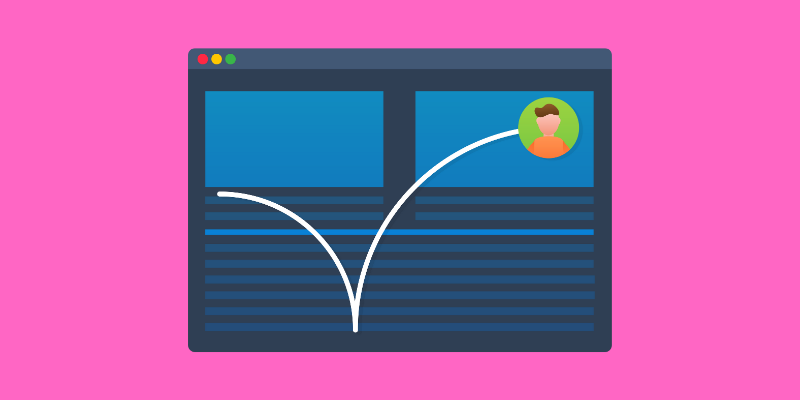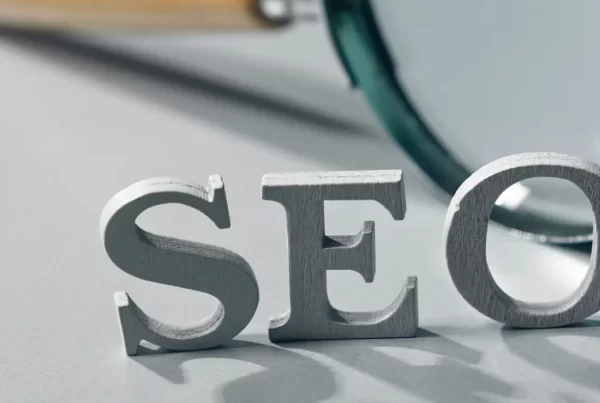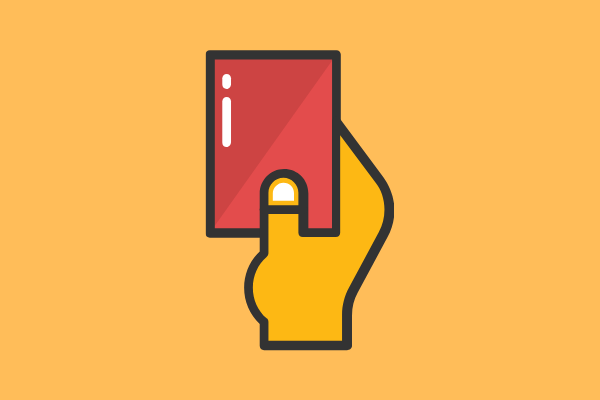Last Updated on 1 year ago by Ecem Ertürk
The bounce rate of a website is significant. Because it indicates how successfully visitors engage with the content or user experience of a webpage. The bounce rate is measured when someone views a single page on your website and does nothing before leaving. Bounce rate refers to the number of visitors who leave a page without taking any action. It’s critical to understand bounce rate and how it affects your whole digital marketing strategy. A high bounce rate, for example, might suggest technical SEO difficulties, such as poor website load time. In such cases, we will first explain what the bounce rate is and how to reduce the bounce rate. Before we start, let us state that it would be beneficial for you to work with an SEO agency for this.
What is the bounce rate?

Bounce rate is a web analytics metric that compares all visits to single-page sessions with no user interaction events. A ‘bounce’ occurs when someone visits your website and only looks at one page without taking any action within a certain amount of time. So, if your site receives 1,000 visitors, and 500 of those visits are single-page visits that do not result in any user interaction events, your bounce rate is 50%.
The bounce rate is a numerical representation of the activities undertaken by visitors to your site while on the site. The bounce rate is measured in percentages. It reflects the amount of time that has passed since the user first logged on to the website and till he exits.
The bounce rate tells webmasters which sites visitors spend the most time on and which ones they depart from the most quickly. According to this data, SEO specialists begin the appropriate optimization activities for the users. If you’re having trouble keeping visitors on your site, you should make sure your content and pages are relevant to your sector. The most viewed and time-spent page on the site is used to develop link-building, and content with a high bounce rate is added to this page as a link. High bounce rate pages should only be included as links after they have been optimized; otherwise, no matter how good the link building is, the visitor who clicks on the link will still abandon the page if the website’s low quality persists.
A high bounce rate implies that site users are dissatisfied with the page and are not adequately motivated to explore it. However, it is vital to convert visitors into consumers for the marketing plan to be effective. As a result, single-page sessions imply that the website has failed and that marketing operations have been carried out incorrectly. As a result, finding a way to reduce the bounce rate is critical.
Why reduce the bounce rate?
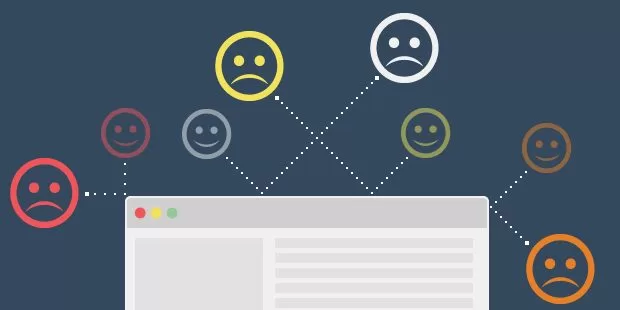
We can use a simple example to better understand why the way to reduce bounce rate is important. Start by imagining yourself as a physical business owner on a crowded street. Lots of people walk through your front door every day. Some take a closer look at the goods from the outside and seem interested, and few of them feel compelled to enter. But something is not quite right. Most of these people just stop right outside the door, look around, and then leave. Why? This is the primary question of why the way to reduce bounce rate is important. This metric shows the percentage of total visitors who leave your site without visiting another page or leaving immediately after entering the site. In that sense, it reveals how many prospects are interested in your brand enough to want to learn more about it, but not enough to communicate with you or buy anything from you.
Bouncing visitors is a missed opportunity. They’re people who came to your website after a long digital journey but didn’t do anything. Engagement is far more crucial than sheer statistics when it comes to digital marketing. It makes no difference if you get a million visitors per day if none of them convert. Because optimization is vital, the way to reduce bounce rate is significant.
You keep them when you can make that perfect first impression. These individuals have a strong desire to learn more about your website, your content, and your business. Each page they view brings them closer to completing a conversion. Not only that, but you’ll have more time to get to know them. Users who spend more time on your site are more likely to return. They make it a habit, which results in increased sales, brand exposure, and loyalty. With the same digital plan and budget as before, a solid bounce rate approach may help a firm enhance conversion rates. It’s a quicker and easier way to broaden your horizons.
What Should it Bounce Rate Be?
There is no definitive solution to the question of what the bounce rate should be. Numerous websites have been created for various industries and various objectives online today. As a result, the bounce rate from an ideal site has not been precisely calculated, but rough figures have been established. The following are the global average bounce rates:
- E-commerce and online stores 15-45%
- Corporate sites 25-55%
- Newsletter sites 40-60%
- Service sector (like tourism) sites 45-60%
- Blog sites 65-95%
The graphs above show quantifiable data on on-site bounce rates by industry.
A high bounce rate indicates that a visitor’s total experience is brief; they visit a single page on your site and then leave. The bounce rate of visitors who spend time on a website and click on accessible links is low.
A high bounce rate isn’t always a bad thing in terms of good vs. bad. A good bounce rate and a bad bounce rate are relative terms. They can be defined in a variety of ways, including subjectivity. According to Google, a high bounce rate is problematic if the success of your site depends on people viewing more than one page. A high bounce rate, on the other hand, is completely acceptable if you run a single-page site, such as a blog, or offer other forms of content where single-page sessions are anticipated.
Another approach to considering this is to consider the structure of a website. Let’s have a look at an eCommerce site. The homepage may have the highest bounce rate of any page since you want your visitors to stay on landing pages where they may make a purchase, such as a product page. So, what constitutes a good bounce rate? A bounce rate of 56 percent to 70 percent is high, though there might be a solid explanation for it, and a bounce rate of 41 percent to 55 percent is considered moderate. The ideal bounce rate is between 26 and 40 percent.
How to Reduce Bounce Rate?
Because it gauges how interesting your content is, the way to reduce bounce rate is an important SEO parameter. A high bounce rate might indicate that visitors aren’t getting what they’re looking for on your site. It might also be a hint that you need to enhance your website’s content or user experience. Whatever the case may be, you’re most likely missing out on conversion possibilities.
A comprehensive examination of your bounce rate may help you enhance the usability of your website’s navigation, call to action (CTA) placement, and content quality, among other things. It’s especially useful for comparing different pages on your website to one another. If a topic has an abnormally low or high bounce rate, for example, it might mean that your audience favors or hates that topic. Bounce rates can also be used to compare segments of traffic to one another. Because of such situations, you need to learn the answer to the question of how to reduce the bounce rate. There are no hard and fast rules to reduce bounce rate, but there are a few common tactics you can use on your own website and in your online marketing activities that may be matched with a conversion optimization strategy.
-
Speed Up Your Page Load Time
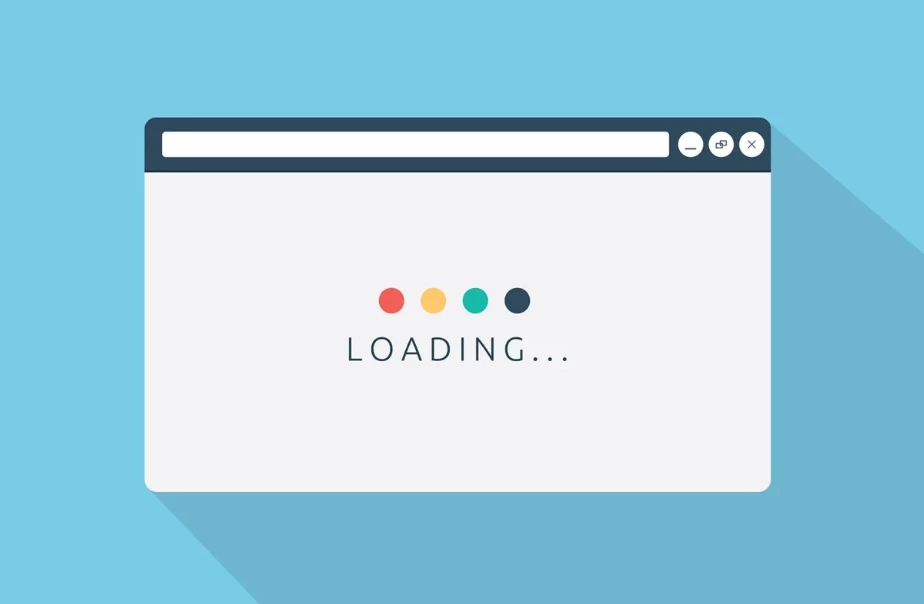
Many marketers believe that if their bounce rate is high, the fault must be with the content of a page – when, in reality, severe issues might occur before a user even gets a chance to read it.
Taking an eternity to load is likely the worst drawback a website can have. After all, it doesn’t matter how excellent or horrible a website’s content is if a user can’t read (or even see) it, and 47% of visitors want a web page to load in two seconds or less, making on-page optimization critical to reducing the bounce rate. This is especially true when it comes to mobile websites. According to Radware statistics, a connection speed delay of just 500 milliseconds can result in a 26 percent rise in ‘peak annoyance’ and an 8 percent drop in engagement.
Slow-loading websites are also one of the most common reasons for eCommerce shoppers abandoning their carts. Only 2% of the world’s top 100 eCommerce websites have mobile sites that load in less than five seconds – and one-fifth takes almost eight seconds to load entirely, which is almost criminally lengthy for a site that lives and dies on conversion rate optimization.
You may improve the speed of your page and reduce the bounce rate by doing the following steps:
- Unnecessarily third-party scripts should be removed.
- Upgrade to a faster web server and enable lazy loading, which prevents pictures from loading until the user scrolls down the page.
- Large page elements that require a long time to load should be removed (images, GIFs, etc.)
- Remove any unnecessary third-party scripts that must be loaded before a user may interact with your website (heat maps, analytics, etc.)
- Implement browser caching, which saves some items in a user’s browser so they don’t have to be refreshed every time the page is accessed.
When all other factors are equal, a faster page speed results in a lower bounce rate.
-
Design a better user experience
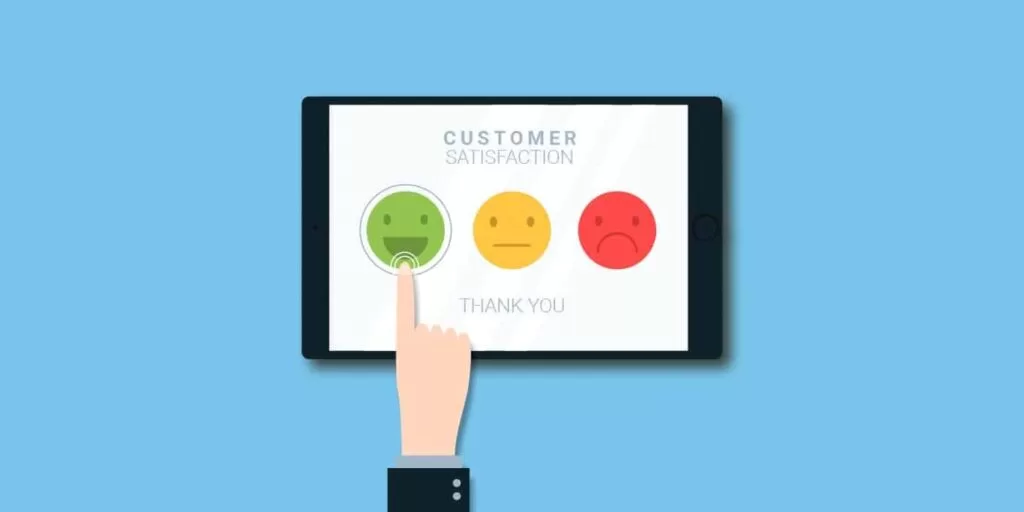
A better user experience begins with a fast, well-organized website. But it extends well beyond that. It’s the balance of aesthetic elements, information, and interaction that meets and exceeds certain goals. Once again, use your buyer persona as a guide. What do people anticipate seeing when they visit your website? What precisely are they searching for? How can you favorably impact and even surprise them? Perhaps a rewrite of your pages is required to make them more interesting.
Make every effort to remove any components of your site that can bother or distract your visitors, including the usability of your site navigation.
Someone will most likely flee if they are bombarded with a chatbot, a full-screen pop-up ad for your newsletter, and a popup coupon offer all in fast succession. Be aware of the popups and adverts you employ, and instead of shoving them in the user’s face, integrate them effortlessly into your site. Make sure to look at your site’s keywords and how they rank as well. Are you targeting the right people at the right time with the correct keywords for your industry?
If you’re offering marketing automation software, you want visitors to your site who are familiar with the term and can better appreciate the advantages your product provides. You don’t want to attract someone who is just learning about the subject. If that individual discovers you and visits your site, they may feel overwhelmed and depart soon, affecting the total bounce rate of your site. In a nutshell, make sure that your page ranks for keywords that are relevant to its content. Try categorizing your site’s pages by subject to see what themes they belong to, then double-check that they’re attracting the correct visitors.
-
Make sure your website is responsive

With the advancement of technology, the number of screen sizes, input methods, and device capabilities that may access your website is growing. When a person visits your site but finds it difficult to navigate or visualize any of the content, they will most likely bounce. A responsive site is built to adjust to any of those variations, ensuring that you don’t lose views due to a little issue.
Visitors may leave your site if the content doesn’t fit the search intent. In other words, the content of the page does not match what the visitor is looking for. If someone searches for ‘the best running shoes and your page returns a list of the best running shoes of all types, this isn’t what they’re looking for. They just want to compare trail running shoes and are not interested in looking at other styles.
The page content must match the intent behind the search phrases if you want them to stay on your site and to reduce the bounce rate. Writing a good title tag and meta description can also help the searcher understand what they will discover on your page.
-
Try to understand why visitors are leaving so early
Let’s return to the example we used at the start of this post. People are coming into your business, looking around, and then leaving. What is the first thing that comes to mind when you think of a question? You should be wondering what frightened them away. Was it because of the arrangement of the store? Was there a disconnect between their expectations and what they discovered on the inside? Were the offers withdrawn? Perhaps the folks you’re attracting aren’t the ones that care about your brand? Each answer you uncover will provide you with a better understanding of what you need to do to reduce the bounce rate. This is why it’s critical to understand your consumer persona and base your approach on it.
-
Improve Your Content’s Readability

Your visitors will have no incentive to stay on your site if the content is out of date and sparse. After all, why would anyone want to investigate your site further if their first impression was negative? If you want people to stay on your site, you need high-value, high-quality content that exhibits your knowledge and covers the subject fully.
One of the most effective methods to keep people engaged with your company is to have a well-defined content plan. Throughout the user experience, blog entries should comprehensively cover important subjects, answer crucial questions, and identify future actions through internal connections. Also, with more white space, larger font sizes, subheadings to break up text blocks, and shorter, easy-to-skim paragraphs, you can make the page more welcoming and readable.
-
Avoid Popups – Don’t Disrupt the UX
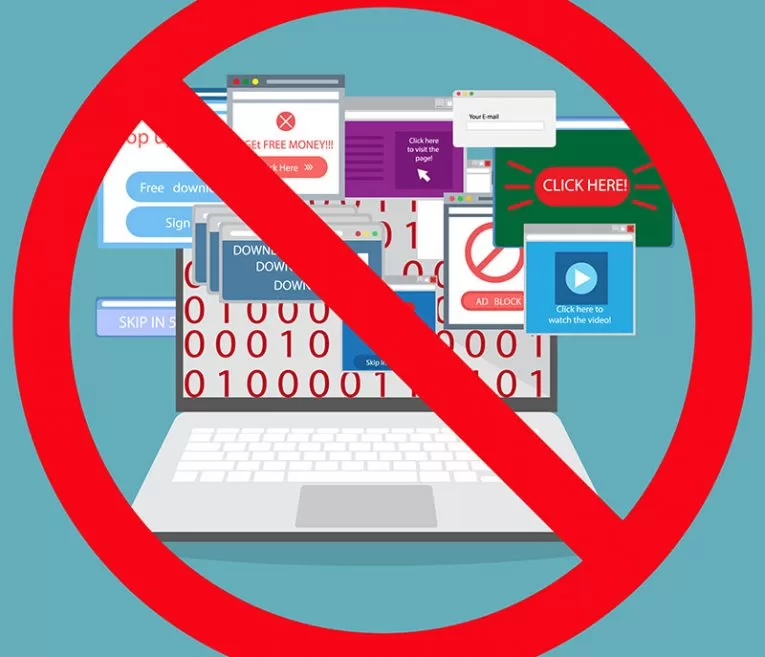
If your page has too much advertising, your users will press the return button as soon as it loads. Multiple adverts on a page that disrupt the user experience and increase page load time are inconvenient for website users and can damage a brand’s reputation. Ads can also cause the layout of a website to alter unexpectedly, making navigation difficult for users. This not only irritates users but can also harm your search engine rankings because Google considers page shifts part of the Page Experience ranking factor. This is true not only for blogs but also for eCommerce sites. Users are equally as overwhelmed with popups for sales advertising or to join a mailing list.
Full-screen pop-ups, for example, are not only inconvenient but can also lead to search engine penalties. The user is the most important factor to consider. You want visitors to be lured into your page and remain for as long as they need to convert, and although some pop-ups are fine — such as well-crafted inbound messages that provide context to a site — avoid any that drastically interrupt the user experience and drive visitors to leave. Distracting advertisements should be avoided in the same way that pop-ups should be avoided. It is critical that the anchor advertising be placed in such a manner that it does not cause the user to become distracted. As a result, you provide consumers with a variety of options for focusing on the correct places.
-
Create a Compelling Call-to-Action
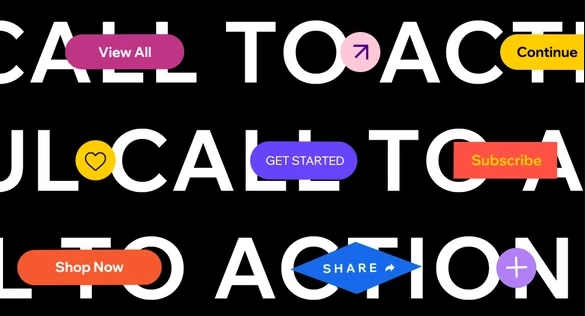
Just as you should think about what the user wants when delivering content, you should also consider what action you want users to take after they’ve consumed whatever content you’re offering. You may urge your visitors to take action by presenting just one crystal-clear call to action after you know what you want them to do.
The more CTAs you have on a single page, the more likely your visitors will be confused and overwhelmed. Sure, it’d be ideal if we could put many CTAs on a single page and trust visitors to thoroughly explore and assess each one before taking action, but let’s face it, that’s not very likely. Visitors should be able to locate (and accomplish) what they want to do quickly and effortlessly on your site. Don’t bombard your visitors with too many CTAs. Consider the user’s purpose and how your pages may assist visitors in achieving their objective, then provide a clear, relevant call to action that will assist them in completing their task.
If you have powerful, optimized content on a page, you should consider the type of action you want people to take. A well-placed call to action should stimulate this activity. While you can have several CTAs, too many can confuse or turn users off, and they will not function. The size, color, and location of the CTA button on the website are all important. CTA buttons, for example, should be at least 44 pixels in size, according to Apple.
-
Keep Your Blog Fresh

Maintaining a fresh blog with relevant content will always provide the highest return on investment. Businesses that update their blogs with fresh content regularly will get more leads than those that do not. However, it’s critical to distinguish between forceful and appropriate content. Your readers may respond with a ‘wow’ reaction to your content, but it may not address their problems. The correct content, on the other hand, will not only impress them but will also provide them with practical advice that will help them achieve their goals.
-
Target Keywords With High-Value Traffic
A keyword isn’t merely a keyword. Some are more valuable than others. These keywords can change depending on where you are in the sales funnel – whether you’re trying to drive traffic and build authority or convert consumers whose interest you’ve piqued. To fulfill the promise of a phrase that generates visitors to your site, you must follow through with the appropriate content.
If someone is searching for an ‘agency, they may be looking for an agency that will do SEO work for their brand or company’s website. However, if someone is searching for ‘What is an SEO agency?’, it means he/she is looking for instructive content. So when evaluating keywords, make sure that the keywords your website is ranking for match the actual content. After that, consider using a topic-cluster structure that groups your site’s pages into clusters by topic to help drive organic traffic to the right sites.
-
Attract the Right Visitors
It is critical to understand your target audience to reduce the bounce rate. When you generate content, you should think about who you’re writing for. When you develop engaging content that captures the interest of your target audience, it is almost always read all the way through. Your bounce rate isn’t going to go down either. However, if you do a little bit of everything, your visitors may quit your site, believing that you don’t understand the issue and that the content doesn’t provide them with what they want.
As a result, fully relevant content, like relevant keywords, should be utilized throughout the site and targeted to the appropriate audience. You should identify the site’s primary target demographic and generate specialty content for them.
The scope of the targeting should not be overly broad. Because people who don’t know what they’re looking for are more likely to come upon your site. By focusing on a certain user group, you may identify people who are interested in learning more about what your website has to offer. These people will gladly browse your website.
-
Create Multiple Landing Pages for High-Volume Keywords
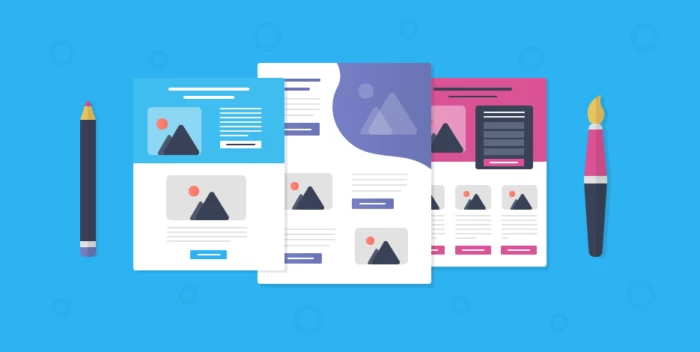
Predicting the entrance points to your site is a difficulty that businesses face when trying to lower bounce rates. It makes no difference how beautiful your home page is if the majority of your traffic originates from a blog post that isn’t optimized for interaction.
Landing pages are a wonderful way to do this. They’re built to be the best entrance points, with eye-catching layouts and call-to-actions. Consider the chances you have to produce more of them, as well as how you can adjust your marketing plan to direct your visitors in the right direction.
-
Set External Links to Open in New Windows
When developing an external linking strategy and linking to other websites, make sure that the links open in a new tab. A key component of any effective web design approach is to design with the user in mind. When you open many external links in the same tab, consumers get back button fatigue. This implies that every time a user opens a link to an external page, they must click the back button to return to your site (if they wish to return — the new site may distract them). Your website visits will be reduced as a result of this.
They’ll also hit the back button four times if they view four distinct external sites from your tab. This is inconvenient and time-consuming. It also raises the rate of departure and bounce.
-
Do some A/B testing
If you’re still unsure about which decisions can increase UX and reduce bounce rate, why not put them to the test? A/B testing is when you make two separate versions of the same page and show them to different visitors as they arrive. Then you can see which one did a better job of maintaining traffic. You may either stick with the winner or go on to another A/B to continue boosting your stats.
A/B testing is a terrific technique to evaluate which of your site’s improvement strategies are the most effective. For a product, you may have two separate sales pages—Page A and Page B—with various styles and calls-to-action (CTAs). When you run an A/B test, you display half of your visitors on one page and the other half on the other. The outcomes should demonstrate which pages keep visitors on your site for longer.
We mentioned the basic studies you will do to reduce the bounce rate. However, by working with a Google ads agency, you could carry out holistic SEO strategies. In this way, you could get the right traffic for your website with the appropriate target audience.


